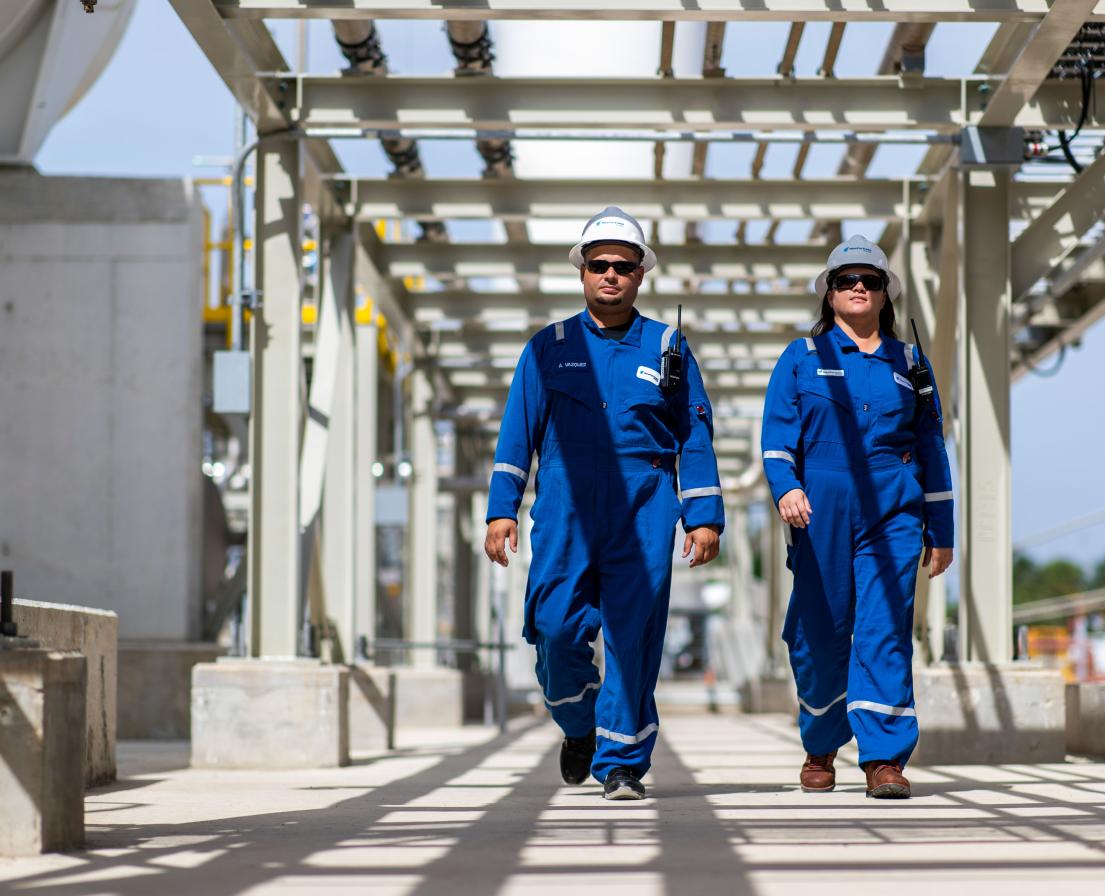What is hydrogen?
Hydrogen
Get to know hydrogen
Since the early 16th century, when Swiss alchemist Phillip von Hohenheim mixed metals with strong acids and produced a flammable gas, people have worked to understand and harness the power of hydrogen.(1) In Greek, the word “hydrogen” means “maker of water,”(2) and today, that property makes hydrogen an attractive sustainable fuel, because, when used for energy, its only byproduct is water.(3)
Read on to learn more about what hydrogen is, how it’s obtained, and how it’s used to enhance the quality of our lives.
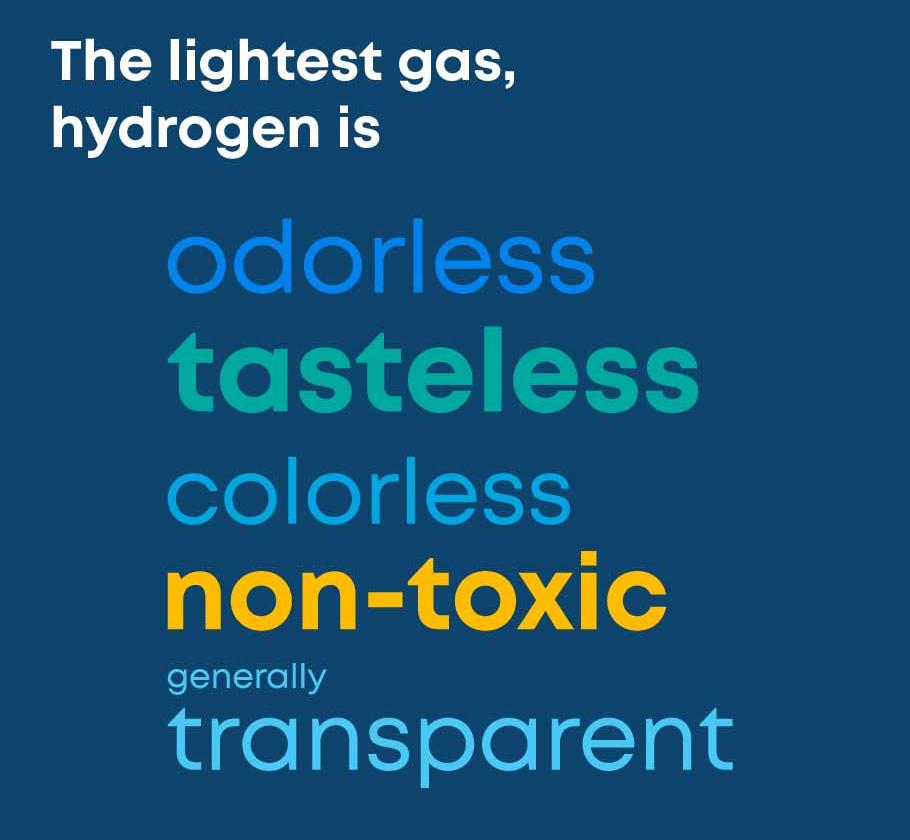
What are the physical and chemical properties of hydrogen?
Hydrogen is the first and simplest element in the periodic table, where it is known by the symbol H, and given the atomic number 1, denoting the single proton in its nucleus.(4)
The lightest gas, hydrogen is colorless, odorless, tasteless, generally transparent, and non-toxic.(5) It’s easily diffused, and its molecules have a velocity higher than those of any other gas at a given temperature. Consequently, kinetic energy is distributed faster through hydrogen than through any other gas; for example, it has the greatest heat conductivity.(6)
It typically appears as a diatomic molecule – two hydrogen molecules, known as H2. One of the first-discovered and most refreshing qualities of hydrogen is that, when burned with oxygen, it forms H2O, better known as water.(7)
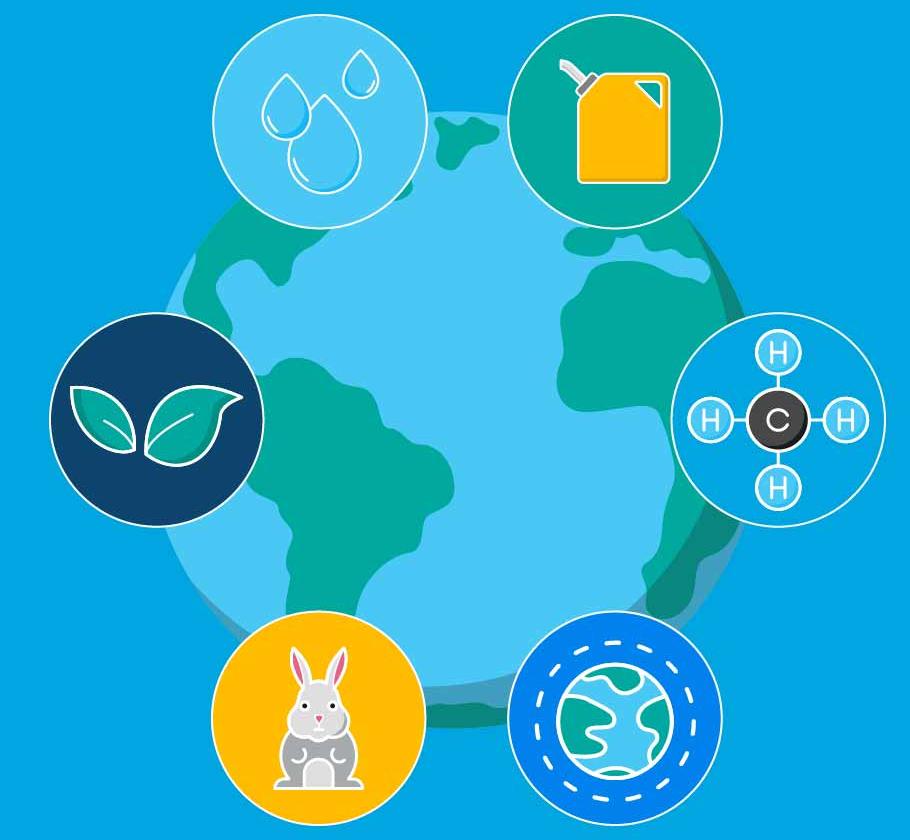
How abundant is hydrogen?
Hydrogen is the most abundant element, estimated to comprise 75% of the mass throughout the universe,(8) and beating the next most plentiful element, helium, three to one.(9)
It can be found everywhere – here on Earth, it’s always found combined with other elements to make the water that covers two-thirds of the planet, as well as plants, animals, oil, natural gas,(10) and the atmosphere. Indeed, just about anything that contains carbon also has hydrogen.(11) It’s also the main element in our sun.(12)
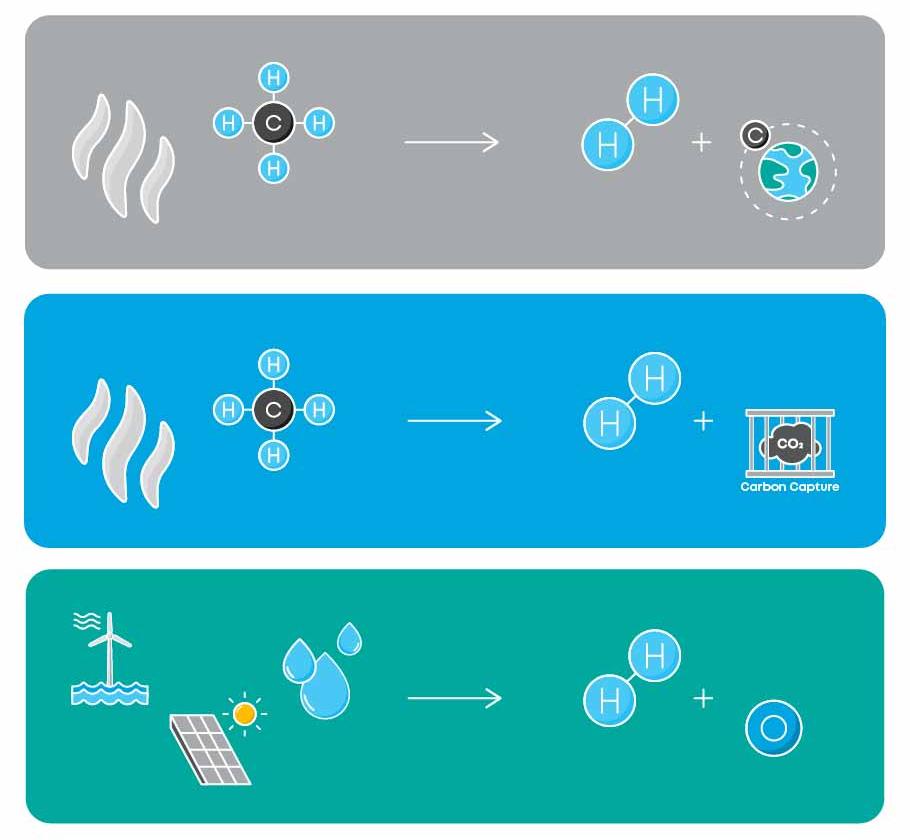
How do we get hydrogen to use for energy?
Because hydrogen doesn’t exist naturally without other elements, transforming it to be a viable fuel source requires extracting it from its elemental partners.
Since von Hohenheim’s time, people have known that combining certain acids, such as sulfuric or hydrochloric acid, with zinc or another metal, can deliver hydrogen molecules, but they’re usually tainted with volatile chemicals from the metals. Then, during the Industrial Revolution through the mid-20th century, hydrogen production involved coal-based operations.(13)
Today, we use some colorful terms to describe how we access hydrogen for energy: grey hydrogen, blue hydrogen, and green hydrogen.
With grey hydrogen, non-renewable hydrocarbon fuel sources such as natural gas are broken down into hydrogen and carbon, with the latter emitted into the atmosphere. Blue hydrogen is obtained in the same manner, but the carbon is captured or sequestered.(14) About 95% of industrially produced hydrogen(15) comes from steam reformation, which involves treating natural gas with high-pressure steam and a nickel catalyst(16) at temperatures surpassing 650oC(17) to create hydrogen and carbon monoxide.(18)
In contrast, green hydrogen leaves no carbon footprint. A process called electrolysis uses renewable electricity to split water into just its pure, foundational elements of hydrogen and the same life-giving oxygen we breathe every day.(19)
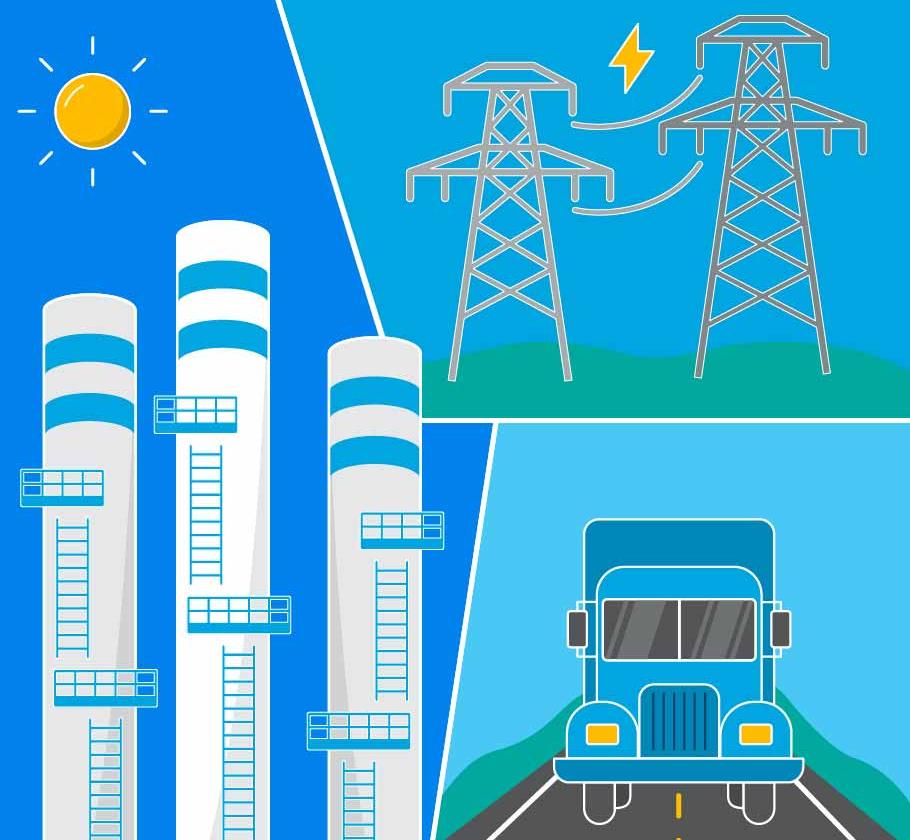
What is hydrogen used for?
Since the 1800s, people have used hydrogen to light their towns.(20) During World War II, the British flew hydrogen-powered barrage balloons to defend themselves against attacks.(21)
Today, about two-thirds of the hydrogen produced worldwide is combined with nitrogen to make ammonia, NH3, primarily for fertilizer.
It’s also used to cool generators and as fuel for electricity generation,(22)petroleum refining,(23) energy storage and transportation, and public and private vehicles.(24)
Japan, Germany, and the U.S. are among the countries piloting hydrogen refueling stations for cars that use hydrogen fuel cells.(25) Hydrogen is even combusted with oxygen or fluorine to fuel rockets and propel space vehicles.(26)
Hydrogen is an emerging tool in a variety of creative uses, including metal-making,(27) cryogenic research, nuclear fission applications, nuclear fusion reactions, atomic hydrogen welding, and even radioluminescent paint for emergency signs.(28)
It may be our simplest element, but hydrogen is integrated into nearly every facet of our world, literally supporting life and driving a complex network of products and services that enhance the quality of our lives worldwide.
